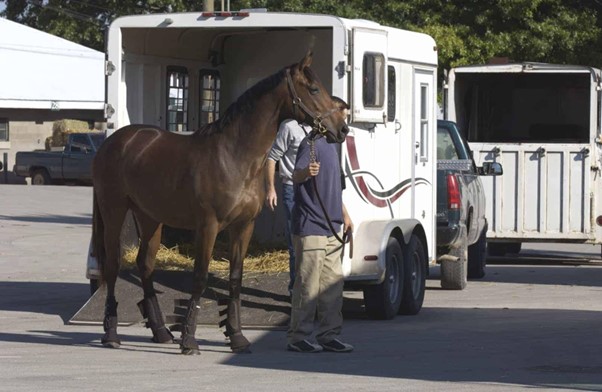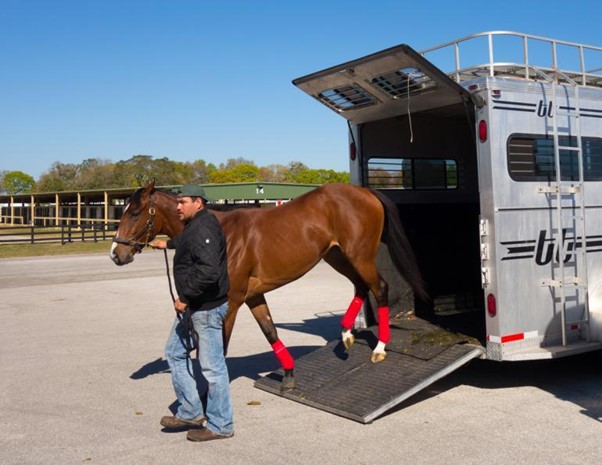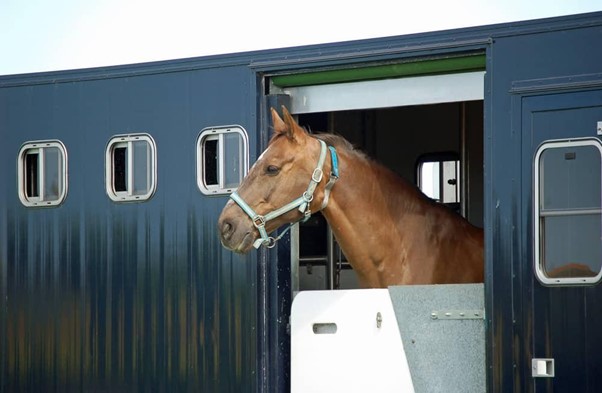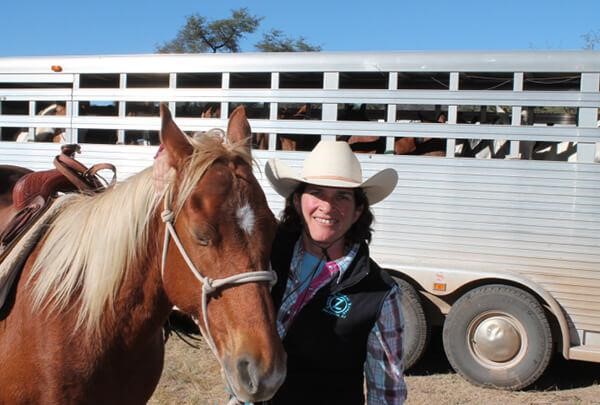Polework Clinic with Kerry Dicken
Monday 15 December 2025
Entries close in 1 day
It may be difficult to know where to begin when determining whether your vehicle (or one you've borrowed or hired) is suitable for transporting horses, but doing so is crucial because your horse's life may be at stake.
A current MOT certificate is required for lorries up to 3.5 tons, and a valid plating certificate is required for trucks beyond 3.5 tons. You must still have the floor, walls, ramps, and other components of the vehicle examined individually because the portion of the vehicle the horse actually travels in is not covered by an MOT or plating certificate.

The TrailBlazer 2 Horse Trailer from Double D Trailers has to be the first and most prominent name on the list. It is simply the best horse trailer ever made in every way, making it one of the best ever produced. This is the one you can choose without a shadow of a doubt if you're thinking about purchasing a two-horse trailer with living space.
In the world of horse trailers, Double D Trailers is a well-known, reputable, and highly well-liked brand. The company sells highly personalized, high-quality products that are available in a huge variety.
It is ideal for horse owners who need to bring two horses on a long trip and also want to enjoy a luxurious ride.

Along with all of that, this trailer has outstanding pricing that is both affordable and reasonable for the segment. If you use a trailer, it's a good idea to have it maintained by a professional at least once a year. Make sure they examine the floor's serviceability, as this isn't often included in the service.
Between having it properly serviced, you can perform your own inspections of the floor and the ramps. This includes taking up any rubber matting and looking for any indications of rot, corrosion, or rust on the floor (depending on the material). Additionally, make sure to look underneath the car.
Before loading or transporting a horse, make sure the vehicle has been inspected and repaired by a professional if there are any visible signs of damage. Hinges and springs should be regularly lubricated to maintain their condition and guard against damage. Additionally, keep a close eye out for any indications that water may have entered via seals.
Before a trip, you should inspect the vehicle's body, whether it's a trailer or a truck, for any evident problems, such as rust, dampness, or rotting. To make sure there are no material tears or sharp edges, inspect the breast/breech bars and partitions.
A minimum tread depth of 1.6mm (or 1mm for vehicles exceeding 3.5t) should be present across three-quarters of the tire's width. Check for anything embedded in the tire as well as any cuts, lumps, or bulges and cracking of the tire walls, especially if the vehicle isn't used frequently because tires can wear out after being left in place for an extended period of time. Also, don't forget the spare wheel! Remember to check the tire pressure on your towing vehicle (if applicable) as well. The manufacturer's manual will tell you the proper tyre pressures for your truck or trailer.
It is crucial to make sure the lights are on, clean, and functional (ask someone to assist you with the brake lights). You should look for any evidence of damage on the connection lead and sockets. Check the breakaway cable as well if you're using a trailer because it needs to be attached to the towing vehicle lawfully. Again, you should get the car evaluated and fixed by a professional if there is any obvious damage to leads or cables, such as splits or exposed wires. If using a lorry, it is wise to inspect the engine compartment for any potential fire hazards, such as bird nests.

The weight of all goods, including the horse(s), passengers, and equipment, must also be known with accuracy because it is very simple to accidentally go over the payload weight limit. Aside from making sure that trailer partitions and/or breast bars can be released from outside the truck, make sure you know how to lower ramps in an emergency, such as if the hydraulics or electricity fails. Make sure you have adequate breakdown cover in place, which covers the rescue of both your horse and the trailer.
Suggested Reads:
Most Successful Racehorses of All time
Have Racing Fans Fallen Out of Love with Super-Rich Horse Races?
There are more aspects to take into account when deciding whether to move your horse yourself or with the help of a professional carrier.
A simple place to start is a fast search on Google and social media, which should turn up consumer evaluations. It's always worthwhile to read them, and by starting here, you could end up saving a lot of time and misery.
You must confirm that the transporter is qualified and authorized to transport animals. Checking that they have the right insurance in place should be one of your other concerns. Legal requirements do not exist for specific equine breakdown insurance or care, custody, and control insurance, but hire and reward insurance is required. But if you want to be certain that your horse is in the best possible hands, you might want to choose a transporter who possesses both of the latter.
The kind of transporter you require may change depending on how far your horse must go. Authorization from the transporter is not necessary for trips under 65 kilometers. Horses can only be transported by Type 1 authorized transporters on trips lasting under eight hours. They will have successfully passed an online theoretical test proving they are aware of the rules protecting the welfare of the horses they transport. If the trip takes more than eight hours, you'll require a Type 2 authorized transporter who has proven their proficiency in handling and securely transporting horses through a practical evaluation of competence.
In addition, they are required by legislation to have emergency procedures in place, and a Defra-authorized inspector must evaluate their vehicle to ensure its security, temperature control, and ventilation.
These measures are mandated by law to preserve your horses' welfare during transit and to ensure that they arrive in the same state as when they left (if a little more tired). Even if the price is hard to pass up, we strongly advise you to turn away if the transporter does not have the proper authorization.

The key is to stay hydrated. Dehydration can be avoided by encouraging a horse to drink before and throughout the journey.
Horses require water far in advance to thoroughly hydrate, much like human athletes do. It could be important to give an animal electrolyte before a journey to get it to drink enough.
Dehydration places stress on the body and lower performance. Learn what your horse likes. Do you experience discomfort in confined areas while traveling? Do you feel comfortable traveling in coach or do you prefer business class?
Experts said that it could surprise people that some of the bigger horses prefer single stalls, and some of the smaller ponies prefer multiple stalls. Knowing a horse's preferences and making accommodations to meet those preferences are the keys.
Travel with a companion. While some horses may travel alone without incident, others require a companion.
Sheep, goats, rabbits, donkeys, and ducks have traveled with many families as their pets.
According to experts, ducks have been the most unusual traveling companion for horses. The ducks on the hired jet were remarkably at ease, and the horses were remarkably connected to the ducks.
Fit and healthy horses are better equipped to withstand the strain of travel. Even light exercise helps horses develop the stamina they need to manage their fluctuating weight when traveling. Having the appropriate health certificates is another aspect of preparation.
Expert advice talking to a veterinarian to discover what shots and health certificates are required for the destination you'll be visiting. We spend a lot of effort making sure our clients have the proper documentation for their location.
.Keep in mind that moving horses is never without risk. That is true whether traveling over short or large distances by horse trailer or airplane. Last but not least, be careful to inquire about the transporter's biosecurity procedures or the steps they are taking to stop the transmission of disease.